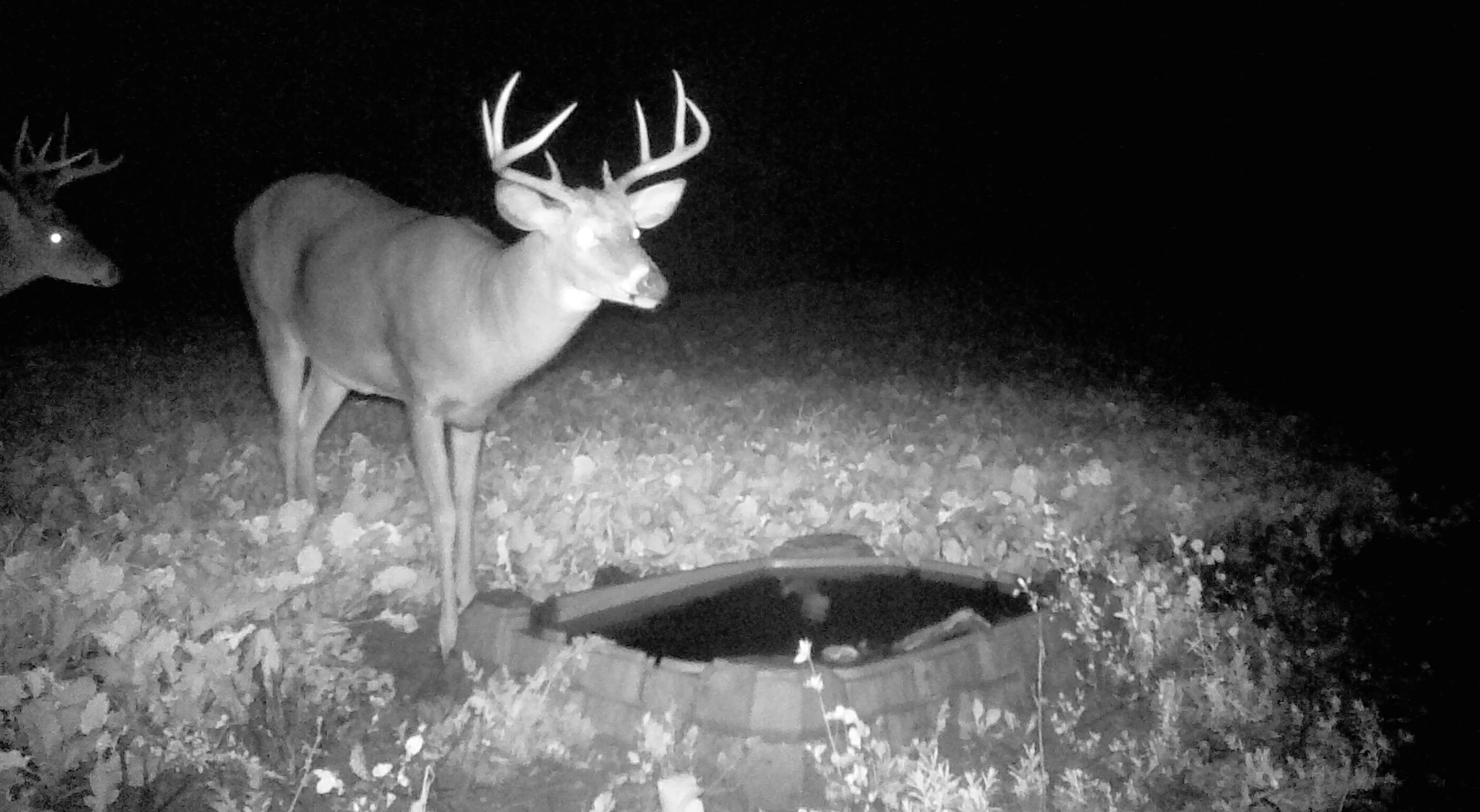Have a perfect place for a blind or treestand, but the deer always seem to skirt by just out of range? Having an ideal setup where you can approach and exit without spooking deer, yet the deer move through and never offer a shot can be extremely frustrating. What happens if there are no other options for you to get closer? You have to make the deer come to you. So, what can you do to steer the deer closer to your setup?
Here are 6 effective ways to steer deer within effective bow range.
1 – Hinge Cut Trees
This simple option is ideal for stand sites in the timber. Using the already present timber is a natural option for improving a stand location. Similar to the fencing option which you’ll read about below, you can hinge cut a tree to fall across an existing path or hinge several in a row to steer the deer closer to the setup. If you choose to do this during the hunting season, don’t go overboard with hinging, just take a few select trees and move on. You may even leave the chainsaw at home and select a handsaw.
 Hinge cutting trees in an orderly fashion can effectively steer deer in your direction. Not only that, but it also creates great browse and security cover along the way.
Hinge cutting trees in an orderly fashion can effectively steer deer in your direction. Not only that, but it also creates great browse and security cover along the way.
2 – Plant a Screen
If the location is perennially great year after year, consider planting a permanent screen. This could be switchgrass or even a row of willows, pine, or cedar trees that grow relatively fast. For a temporary/fast growing screen, you may choose to plant sorghum Sudangrass or Egyptian Wheat. Not much is needed, and a strip 8-12 feet wide would be plenty. This method has two benefits, it creates an edge across open terrain and provides added cover and security to the deer trail, all the while bringing them closer for a shot.
RELATED: Fast Growing Screen Trees
 Here’s an example of an annual screen used to visually block off a large pasture from a food plot. This will help make the deer feel more secure.
Here’s an example of an annual screen used to visually block off a large pasture from a food plot. This will help make the deer feel more secure.
3 – Build a Fence
No need to reconstruct the Great Wall, a simple fence using barb wire, hog paneling, round bales, or temporary poly-wire will do the trick. You can either block the existing path or run a longer fence angled towards your hunting location and across the current path of travel, slowly easing deer into range. This second option will act like a cattle shoot, allowing deer to still move in the general direction of travel, but now within bow range!

RELATED: Creating Mousetraps for Deer
4 – Install a Mock Scrape
This is a great option for those hunting on a lease or public ground. A mock scrape is unlike the other options, there is no obstacle in the way, but rather an attraction to entice deer into range. A simple T-post and cut hardwood sapling wired to the T-post with overhanging branches provides the needed attraction to bring deer into range. If you don’t have a T-post handy and low hanging branches are not in sight, make one! Cut a branch from a tree and fasten it to an existing tree trunk or branch low enough deer can use it to scrape. A buck traveling through the area will go out of his way to check an active scrape. Before leaving be sure to scrape out the leaves exposing fresh dirt, this really kicks things off!
5 – Mow a Trail
You may laugh, but a brush hogged path through an overgrown field, tall pasture, or a crop field can be dynamite. Think of this option as a walking trail, like clockwork, deer will prefer this option of ease over the thicker taller vegetation as long as they still feel secure there. Keeping to that point, don’t mow it too wide, one pass with the mower is ideal.

6 – Deploy a Water ‘N Hole
Installing a water hole for deer is a quick and easy way to provide a drink to the wildlife and attract deer to trail cameras and hunting spots. Once the deer get conditioned to this new source, it may even shrink their range if that is the limiting resource (between food, cover and water) on your hunting property. Ultimately this can help your herd and your chances of tagging out!
 These natural looking Water ‘N Holes are super easy to install, look great, and are incredibly effective.
These natural looking Water ‘N Holes are super easy to install, look great, and are incredibly effective.
Wrap Up
Don’t ever give up on a good set, make it better and put the odds in your favor. None of the 6 types of steering options require major expenses or money. They can be done in a few minutes or perhaps an hour or two, and that work can make or break a season. Don’t skip out on the prep work!







